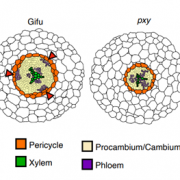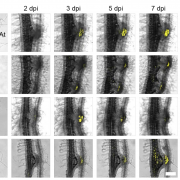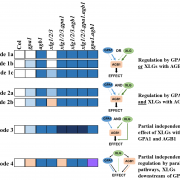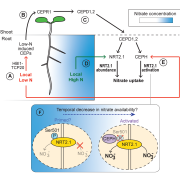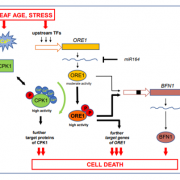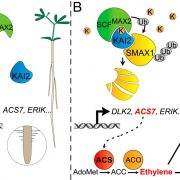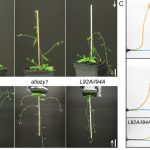Research update: GUN1 hit the mark in 2019
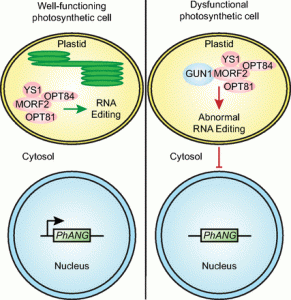
Chloroplasts are able to sense and respond to environmental signals. They send retrograde signals that inform the nucleus about their developmental stage and integrity. In response, the nucleus adjusts gene expression to optimize chloroplast recovery and adaptation. Back in 1993, a screen for genotypes that lack the repression of nuclear photosynthesis genes in response to chemical inhibition of chloroplasts revealed the Arabidopsis thaliana genomes uncoupled (gun) mutants (Susek et al., 1993). In the following years, characterization of the targeted proteins revealed that GUN2 through GUN6 act in the tetrapyrrole biosynthesis pathway, but GUN1 was the exception. This pentatricopeptide repeat protein appeared essential during the early phases of chloroplast development and biogenic retrograde signaling, but its exact function remained speculative. During the Jacques Monod conference on Retrograde Signalling from Endosymbiotic Organelles in 2018, someone even posed that maybe “GUN1 is actually more important to us, scientists, than to plants”.
But 2019 has been an enlightening year for GUN1 as we finally learned loads about its function. It turns out, GUN1 pays a very important role in many different processes in the chloroplast. It 1) interacts with MULTIPLE ORGANELLAR RNA EDITING FACTOR2 (MORF2) and is involved in plastid RNA editing (Zhao et al., 2019), 2) regulates protein import into the chloroplast via its interaction with the chloroplast HEAT SHOCK PROTEIN70-1 (cpHSC70-1) (Wu et al., 2019), 3) maintains plastid protein homeostasis (Marino et al., 2019), 4) is involved in NUCLEAR ENCODED POLYMERASE (NEP) mediated transcription in the chloroplast (Tadini et al., 2019) and finally, 5) directly affects the flux through the tetrapyrrole biosynthesis pathway by directly interacting with heme and other porphyrins, suggesting that gun1 might be not as different from gun2 through gun6 after all (Shimizu et al., 2019). The work published on GUN1 function the past year is a breakthrough for retrograde signaling research. I look forward to finding out what more the future beholds for GUN1! (Contributed by Charlotte Gommers).
Citations: Marino G, Naranjo B, Wang J, Penzler JF, Kleine T, Leister D (2019) Relationship of GUN1 to FUG1 in chloroplast protein homeostasis. Plant J 99: 521-535; Shimizu T, Kacprzak SM, Mochizuki N, Nagatani A, Watanabe S, Shimada T, Tanaka K, Hayashi Y, Arai M, Leister D, Okamoto H, Terry MJ, Masuda T (2019) The retrograde signaling protein GUN1 regulates tetrapyrrole biosynthesis. Proc. Natl. Acad. Sci. USA: 201911251; Susek RE, Ausubel FM, Chory J (1993) Signal transduction mutants of arabidopsis uncouple nuclear CAB and RBCS gene expression from chloroplast development. Cell 74: 787-799; Tadini L, Peracchio C, Trotta A, Colombo M, Mancini I, Jeran N, Costa A, Faoro F, Marsoni M, Vannini C, Aro E-M, Pesaresi P (2019) GUN1 influences the accumulation of NEP-dependent transcripts and chloroplast protein import in Arabidopsis cotyledons upon perturbation of chloroplast protein homeostasis. Plant J. doi:10.1111/tpj.14585; Wu G-Z, Meyer EH, Richter AS, Schuster M, Ling Q, Schöttler MA, Walther D, Zoschke R, Grimm B, Jarvis RP, Bock R (2019) Control of retrograde signalling by protein import and cytosolic folding stress. Nature Plants 5: 525-538; Zhao X, Huang J, Chory J (2019) GUN1 interacts with MORF2 to regulate plastid RNA editing during retrograde signaling. Proc. Natl. Acad. Sci. USA: 116: 10162-10167


